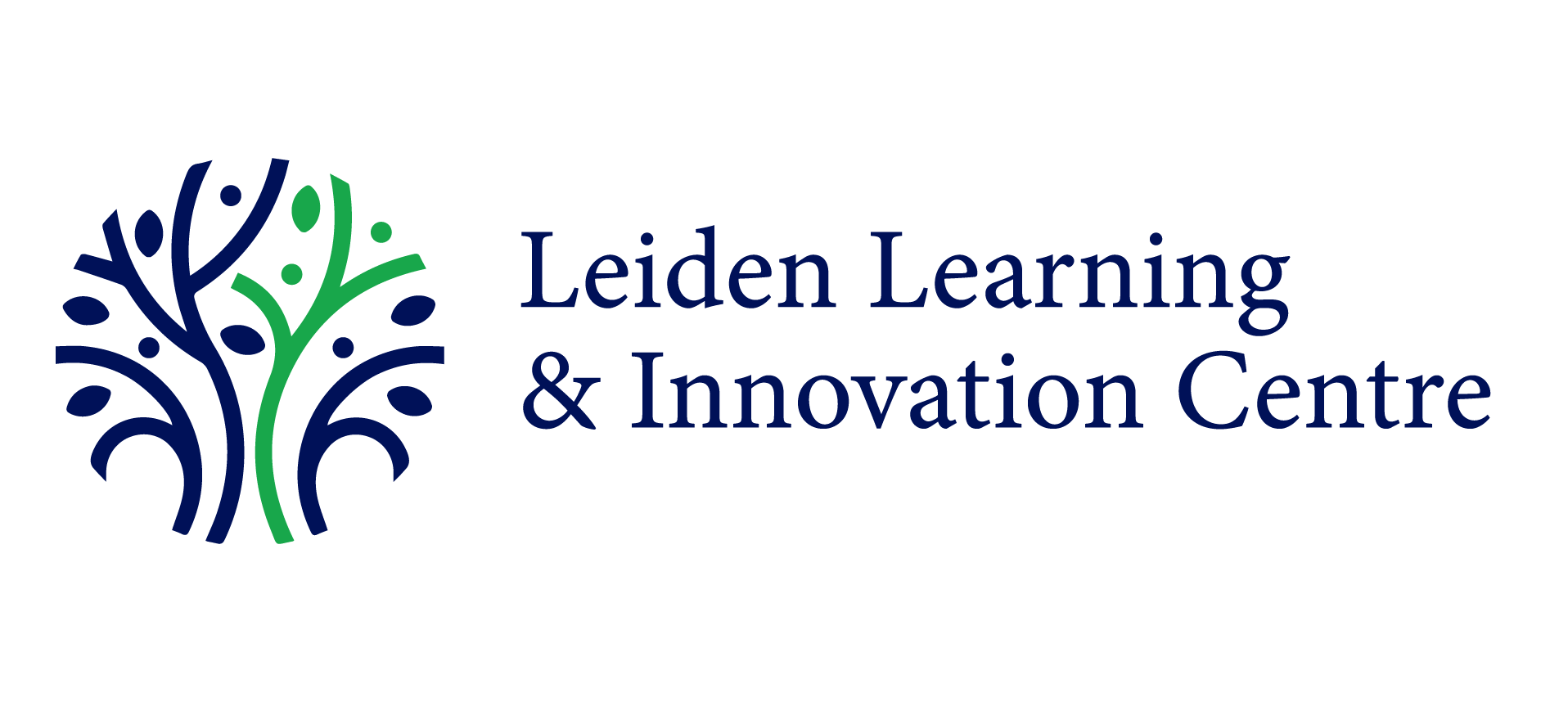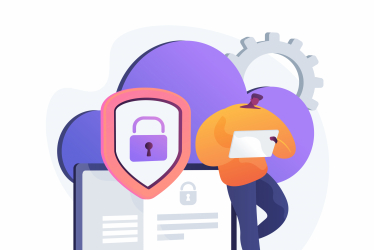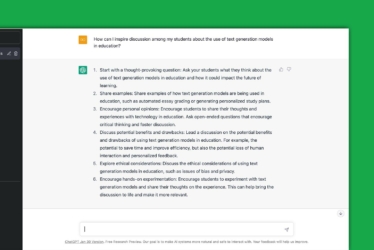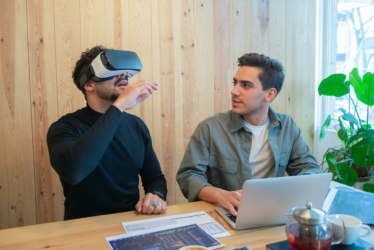Insights
How Podcasting Can Enrich Your Teaching
Do you see everyone wearing headphones in the train nowadays? Do you wonder what they’re listening to? Besides the greatest hits of the 80’s, more and more people are rediscovering the radio format through podcasts. The popularity of podcasts has risen in the last few years: 40% of young people in the US between 12 and 24 listened to a podcast last month(1). With this in mind, could podcasts also be of value for learning? And how can you, as a teacher, start profiting from the use of this medium?
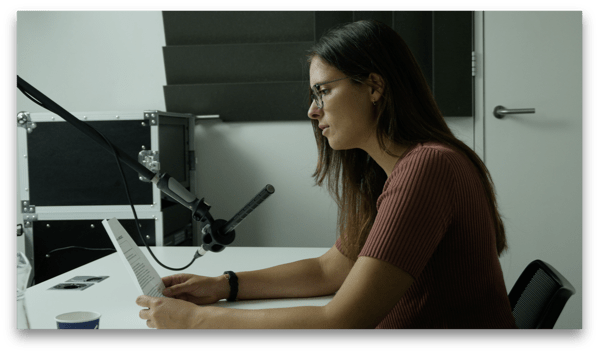
Podcasts can enhance the personal connection felt between teacher and student. In research on educational podcasting, students indicate that they feel they have a one on one relationship with their teacher when listening to a podcast. Sometimes the connection feels even more personal than in a lecture class 2. This connection is especially relevant for distance learners, but also for your on-campus students, sometimes missing the personal connection in a lecture hall setting.
The medium is also appealing to students for their flexibility. Instead of having to process all the information during a lecture, students can gain ownership of their learning experience by (re)listening to a podcast3 anywhere they want4. Even though a lot of students prefer to listen at home5, podcasts are accessible anywhere through streaming or even offline, as with the small file-size they can be quickly downloaded to your phone.
Podcasts can also be used for student assignments; a podcast can support a surprising amount of depth and quality and stimulate creativity. A Public Administration student at Leiden University who had to make a “policy pitch” podcast as an assignment described her experience as follows:
“Making a podcast was a refreshing and diverging assignment. It forced us to be short and sweet, and to really structure the way we presented the information. We also had to think about how the information would stick with the listener, since there was no visual support. This added an extra challenge to the assignment.”
The teacher of this course explains the reason to implement podcasts as a new way to design assignments and assessments:
“After listening to podcasts, also in my private life, I thought, ‘that’s a way to test skills, free up time during class and also be a fun experience!’ I think students quite like to do things that are a bit different, I got some good feedback about the podcast format. Also for my educational experience it’s a more bearable type of assessment to mark.” – Alexandre Afonso, assistant professor of public policy at Leiden University
Podcasts are fairly easy to make yourself6 and are thus often more cost effective than video7. All you need is a laptop and a USB external microphone or a simple audio recorder, even your phone can do the trick. This accessibility makes audio an especially interesting medium to produce extra material or to efficiently deliver new content to your students. For instance, when there are new developments in your area of expertise, such as relevant news events or research outcomes, you can record a short podcast the same day, to update your students. This allows you to share your thoughts on a topic in a way that makes your content more relevant, just-in-time and helps students put their learning into perspective8.
Another way you can use podcasts is by interviewing experts, such as researchers or people from different backgrounds. By including these interviews in your teaching, students get access to diverse voices and perspectives.
Fatiha Azzarhouni from the Leiden Islam Academy and teacher in an online course on “Islam in the classroom” used podcasts to interview parents from children at primary schools in the Netherlands to get a better understanding of their beliefs, worries and view points with regards to diversity in the classroom, she says:
“Utilising digital innovation, in this case in the form of (…) podcasts, enabled the placing of real experiences of real people at the centre of the discussion during my course, rather than only abstract information about the topic.”
Are you a teacher interested in creating podcasts to record a lecture, conduct interviews or create a student-generated podcast assignment? Checkthese tips on educational podcasting from Leiden University’s Video Toolkit or some great general podcasting design and recording recommendations here. The best advice is probably to put on your headphones and start listening to podcasts yourself, get inspired and try it out yourself.
Check out Leiden University podcasts produced for a MOOC on Medieval Arabic Culture or listen to an episode of one of our favourite podcast series. Happy podcasting!
Advice from the Experts
Podcasts can be an interesting medium to enrich your teaching & learning. Possibilities are endless: using the medium for knowledge sharing, giving expert insights or activating learning by letting your students produce media. In this article we only touched the surface of opportunities offered by educational podcasts. Want to learn more? Contact the Centre for Innovation via Yentl Croese (Learning Experience Designer) or Joasia van Kooten (Media & Education Designer).
FAQ on podcasts
Tired of reading? A 5 min. podcast with the main tips & tricks can be found here.
What is a podcast?
A podcast is an audio file delivered online, like a radio programme. However, it is easier to produce yourself and can be done on your smartphone. The possibility to download podcasts makes the medium very flexible. Audio file sizes are relatively small compared to video so it’s easy to listen to anytime and anywhere.
Does a podcast require a script?
First of all it depends on the format you choose, for example: an interview podcast would need good questions and a sketch of answers and we recommend to make a detailed script when producing a documentary style podcast. Whether you use a script or not also depends on what you feel comfortable with and how familiar you are with the content you are going to provide. You can either write down everything you want to say, or use keywords to help you relate your story.
Can a lecture be distributed as a podcast?
Yes. However, keep in mind that a podcast is audio only, which means that your lecture should be intelligible with only audio. Besides, it is probable that you would word your content differently for a podcast than you would in a regular lecture. As podcasts lack visuals, it is even more important to tell your story visually so learners can let their imagination work, this can stimulate their learning. Keep in mind, if your lecture has important visuals to bring your message across (formulas, diagrams or animation of a process) it is maybe better to consider recording a video. If you do want to turn your lecture into a podcast, use storytelling and make use of examples so that students better remember the content. For educational purposes, it is best to stick to a maximum of 15 minutes per episode. Do you have more content? Consider dividing your material into several episodes.
What is the ideal length of a podcast?
It is important to consider the duration of your podcast. Most research into educational podcasting advises 15 minutes maximum. Many public podcasts are longer than 20 minutes and use interesting interviews and stories to keep the audience engaged. When you start podcasting, we recommend keeping it short.
Practical tips and tricks
Ready to record your first podcast? You can even use your phone if you want! Just keep in mind that not all phones can record high quality audio, so an external microphone for your smartphone is recommended. Different types are available for Android phones or Iphones. Also remember that you want as little background noise as possible, so it is good to find a spot that is not too noisy. That being said, relevant sounds that are part of your story can add to the message if you plan them.
When you have finished recording your audio, you can either share it instantly, or do a little editing to improve the quality. Audacity is a free professional audio editing software, but it requires some knowledge and can be hard to learn quickly. An easier tool is Kaltura CaptureSpace, which can be used for recording and simple editing. More editing software tips can be found here.
Get in touch with the authors

Joasia van Kooten
Project Design & Delivery
j.van.kooten@sea.leidenuniv.nl
Yentl Croese
Learning Experience Designer
y.croese@sea.leidenuniv.nl
References
(1) https://www.nytimes.com/2019/03/06/business/media/podcast-growth.html
(2) Cox et al, 2009; Taylor and Clark, 2010; Noseworthy and Boswell, 2016
(3) Sutton-Brady et al., 2009
(4) Cebeci and Tekdal, 2006; Salmon, 2009; Downward, 2009
(5) Atkinson, 2007; Evans, 2008; Sutton-Brady, 2016
(6) Lee and Chan, 2007; Taylor and Clark, 2010; Drew, 2017
(7) Lee and Chan, 2007; Jham et al., 2008; Ralph, Head and Lightfoot, 2010
(8) Fothergill, 2009
(9) Salmon, G., & Edirisingha, P. (2009) Podcasting for learning in universities. 2nd edn. Maidenhead: Open University Press, McGraw-Hill Education & Cosimini, M. J. et al. (2017) ‘Podcasting in Medical Education: How Long Should an Educational Podcast Be?’, Journal of Graduate Medical Education, 9(3), pp. 388–389.
